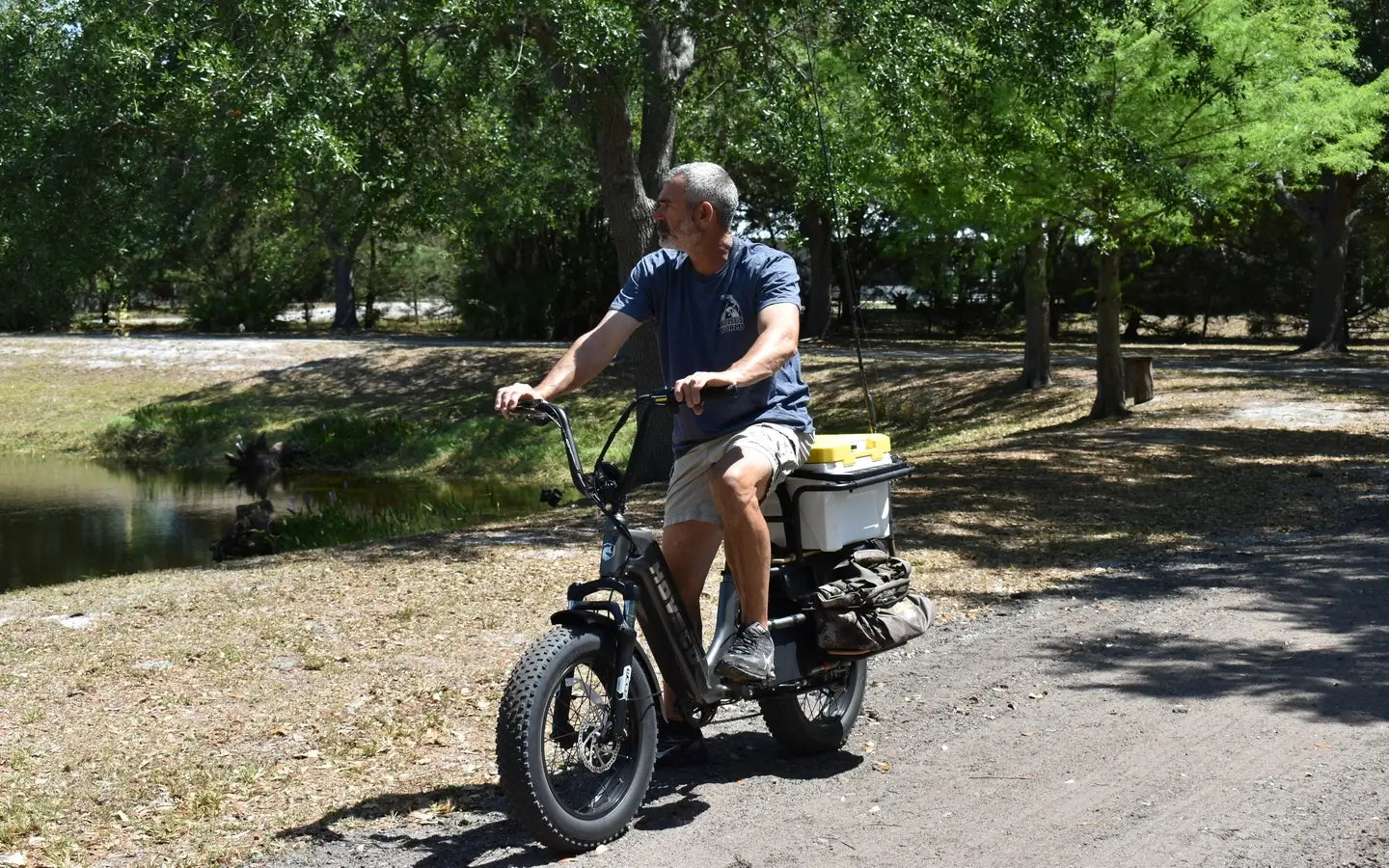
- by LiuJiazhu
What Distinguishes Electric Cruiser Bikes From Traditional Cruiser Bikes?
- by LiuJiazhu
Electric cruiser bikes differ from traditional cruisers by integrating a motor, battery, and pedal-assist systems for effortless riding, while maintaining classic aesthetics. Traditional cruisers rely solely on pedal power, prioritizing simplicity and retro styling. Electric models excel in speed, hill climbing, and reduced rider fatigue, making them ideal for commuting or long leisure rides, whereas traditional bikes appeal to purists seeking minimalist design and lower maintenance.
Electric cruisers use a motor and battery for pedal-assist or throttle-powered riding, while traditional cruisers depend entirely on human pedaling. This key distinction shapes speed, range, and usability across terrains.
Electric cruiser bikes feature motors (typically 250W–750W) and lithium-ion batteries (36V–48V) that provide pedal assistance up to 20–28 mph, depending on local regulations. Traditional cruisers lack any motorized components, relying solely on the rider’s leg power. For example, climbing a steep hill on a traditional cruiser demands significant effort, whereas an electric model uses torque sensors and power modes to amplify pedaling input.
Pro tip: Opt for a mid-drive motor if you prioritize balanced weight distribution and hill-climbing efficiency. Think of it like hiking with a heavy backpack versus using a gondola—the electric bike “lifts” the effort, letting you enjoy the journey.
Electric cruisers offer higher speeds (up to 28 mph) and ranges of 20–60 miles per charge, while traditional cruisers are limited to human-powered speeds (10–15 mph) and unlimited range with rider stamina.
Electric models use battery capacity (measured in watt-hours) to determine range. A 500Wh battery, for instance, might deliver 40 miles in eco mode but only 20 in turbo. Traditional cruisers, however, have no range ceiling beyond the rider’s endurance. Speed-wise, electric cruisers leverage pedal-assist levels to maintain consistent pacing, even against headwinds.
Pro tip: To maximize e-cruiser range, keep tires properly inflated and use lower assist levels on flat terrain. Imagine driving a car with cruise control versus pedaling a skateboard—the electric bike sustains momentum effortlessly.
| Feature | Electric Cruiser | Traditional Cruiser |
|---|---|---|
| Max Speed | 20–28 mph | 10–15 mph |
| Range | 20–60 miles | Unlimited (with rider stamina) |
| Hill Climbing | Effortless with motor assist | Physically demanding |
Electric cruisers weigh 50–70 lbs due to motor/battery systems but mimic classic frames, while traditional cruisers are lighter (35–45 lbs) with minimalist steel/aluminum builds.
E-cruisers integrate batteries into downtubes or rear racks to preserve their retro aesthetic, but the added bulk affects maneuverability. Traditional models prioritize sleek lines, often using curved tubes, wide saddles, and swept-back handlebars. For example, a HOVSCO HovAlpha electric cruiser hides its 48V battery in the frame but weighs 65 lbs—nearly double a traditional Schwinn Sanctuary.
Pro tip: Test-ride both types to assess handling differences. It’s like comparing a vintage car with a modern EV: both look stylish, but one packs hidden tech.
Electric cruisers require battery care and motor checks, while traditional cruisers need chain lubrication and brake adjustments. Complexity and costs are higher for e-bikes.
E-cruisers demand regular battery charging (avoiding full discharges), firmware updates, and occasional motor servicing. Traditional bikes focus on mechanical parts: greasing chains, truing wheels, and replacing brake pads. For instance, neglecting an e-bike’s battery can slash its lifespan from 800 to 300 cycles.
Pro tip: Store e-bike batteries at 50–80% charge in cool environments to prolong longevity. It’s akin to maintaining a smartphone versus a manual typewriter—one needs tech-savvy care, the other basic upkeep.
| Aspect | Electric Cruiser | Traditional Cruiser |
|---|---|---|
| Battery | Replace every 3–5 years ($200–$800) | None |
| Drivetrain | Less chain wear due to motor assist | Frequent chain lubrication |
| Professional Servicing | Annual motor/battery check ($50–$150) | Basic tune-ups ($20–$75) |
Electric cruisers dominate in hill climbing and long rides due to motorized assist, while traditional cruisers suit flat terrains and short trips where rider fatigue is manageable.
E-cruisers convert battery power into torque, making 10% inclines feel nearly flat. Traditional bikes force riders to grind uphill in low gears, draining energy. For long commutes, e-bikes maintain higher average speeds without sweat—ideal for riders with joint issues or office attire.
Pro tip: Choose an e-cruiser with a torque sensor (not cadence sensor) for natural-feeling pedal assistance. It’s like having a tailwind on demand versus battling headwinds alone.
Yes, electric cruisers cost $1,200–$4,000 versus $400–$1,000 for traditional cruisers, reflecting added tech and components. However, long-term savings on fuel/public transit can offset upfront costs.
Mid-drive e-cruisers with premium batteries (e.g., Shimano STEPS) often exceed $3,000, while traditional models like Electra Townie start under $600. But over five years, e-bike commuters might save $5,000+ on gas or subway passes.
Pro tip: Look for e-bike tax incentives or employer commuter benefits to reduce costs. Think of it as buying a car versus a bicycle—the initial investment is higher, but the utility payoff can justify it.
Yes, conversion kits ($500–$1,200) can add a motor and battery, but results vary. Factory-built e-cruisers offer better integration and warranties.
Are electric cruisers harder to pedal without assistance?Yes, their weight and motor resistance make unassisted pedaling harder than traditional bikes. Always keep the battery charged for optimal ease.
How long do electric cruiser batteries last?Most last 3–5 years or 500–1,000 charge cycles. Storage habits and usage intensity greatly impact longevity.
Do electric cruisers require insurance?Some regions mandate it for high-speed models. Check local laws—insurance can cover theft or damage, especially for premium bikes.
Share:
How Do Electric Cruiser Bike Batteries Maintain Longevity?
What Features Define The Best Electric Cruiser Bike For Urban Commuters?